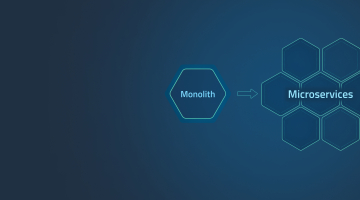
IT security strategy: Essentials you should know to create an effective plan
In this digital era, cyber security has escalated from a niche IT concern to a fundamental element of any business’s survival strategy. As our reliance on digital platforms grows, so does our exposure to a vast, evolving landscape of cyber threats. Consequently, a robust cyber security strategy isn’t a luxury – it’s a must-have. This article embarks on a journey through the heart of cyber security. We’ll unpack what an IT security strategy entails, why it’s crucial, and how to create a resilient and flexible strategy that shields your business.
Need to check the security of your software or infrastructure? Check what we offer.
What is a cyber security strategy?
An effective cyber security strategy is not merely a defensive protocol but a comprehensive blueprint to enhance an organization’s resilience against cyber attacks. It addresses various aspects of information security, from protecting sensitive data and managing user access to fortifying the IT infrastructure and ensuring compliance with relevant regulations. It translates the organization’s security objectives into actionable policies, processes, and technologies, providing a coherent framework for managing cyber risks.
While strategies can vary between organizations due to differences in size, industry, or the nature of their digital assets, certain principles remain universal. These include the identification of potential threats and vulnerabilities, the implementation of measures to prevent and detect attacks, and the establishment of robust incident response mechanisms.
A meticulously crafted strategy also factors in the importance of human behavior in maintaining cyber security. It is achieved by incorporating regular training and awareness programs to ensure employees are updated with the latest threats and best practices for information security strategies.
Given the dynamic nature of the digital landscape, a cyber security strategy is always a dynamic document. It needs regular revision and updating to adapt to emerging threats, technological advancements, and organizational goals. It aligns with the broader business strategy, enabling the organization to pursue digital innovation without compromising security.
Read a related article: “What is the primary purpose of penetration testing?”
Nature of cyber attacks
As we journey through the realms of cybersecurity, understanding the nature and various types of cyber attacks is of paramount importance. Furthermore, this knowledge provides the foundation for effectively preparing against these digital threats.
Cyber attacks are malicious actions executed digitally, primarily targeting an individual’s or organization’s information systems, infrastructures, computer networks, or personal devices. These attacks aim to steal, alter, or destroy a targeted user’s sensitive data, often leading to significant personal, financial, or reputational damage. The motivations behind such attacks vary widely, from financial gain and corporate espionage to political disruption and personal vendettas.
In the current digital age, no entity is immune from these threats. Whether it’s a multinational corporation, a non-profit organization, or an individual user, every entity connected to the digital world is a potential target.
Cyber threats are diverse, encompassing various attack methods, each requiring its own defensive strategies.
Cyber attacks types
- Phishing. It is a deceptive attack where cybercriminals masquerade as legitimate entities to trick individuals into revealing sensitive information, such as passwords or credit card numbers. Phishing attacks often occur via email but can also happen through text messages or phone calls.
- Ransomware. In a ransomware attack, malware encrypts a victim’s data. The attackers then demand a ransom from the victim in exchange for the decryption key.
- Distributed Denial of Service (DDoS). In a DDoS attack, multiple compromised computers flood a server, network, or website with traffic, causing it to become overwhelmed and unavailable to users.
- Man-in-the-Middle (MitM) Attacks. Here, the attacker secretly intercepts and possibly alters the communication between two parties who believe they are directly communicating with each other.
- SQL Injection. In this attack, an attacker uses malicious SQL code to manipulate a database into revealing information it usually would not. The ultimate goal is to steal sensitive data or gain access through the database.
- Zero-day exploits. These attacks occur when hackers identify a software vulnerability before a patch or solution is implemented, allowing them to use the weakness. A cybersecurity strategic plan must account for these attacks and implement measures to prevent, detect, and respond effectively.
Understanding these attacks and their mechanisms is the first step toward creating a resilient cybersecurity strategy. It enables organizations to anticipate potential threats, identify vulnerabilities, and implement appropriate security measures to defend against these digital assaults.
The ripple effects of cyber-attacks: Impact on businesses
Cyber-attacks’ consequences ripple far beyond the immediate disruption of digital services or data theft. They can permeate every facet of a business, causing extensive and sometimes lasting damage. Recognizing these impacts is essential in appreciating the criticality of a well-structured cybersecurity strategy plan.
Possible cyberattack consequences include the following:
- Financial losses. The financial loss may be a cyber attack’s most immediate and tangible impact. These losses can be multifaceted, encompassing everything from the direct theft of funds or valuable intellectual property to the costs of recovery efforts. For instance, businesses may need to invest in expert services for incident response, system repair, data recovery, and strengthening security post-attack. They may also face legal costs and fines if the attack leads to compliance violations.
- Operational disruption. Cyber attacks often lead to significant disruption of business operations. This can range from the temporary unavailability of a website due to a DDoS attack to more severe interruptions where critical data is lost, or systems are damaged. Such operational disruptions can lead to loss of productivity, missed business opportunities, and in extreme cases, even threaten the business’s ability to continue operating.
- Reputational damage. Trust is a valuable commodity in the digital age, and a cyber attack can severely damage a business’s reputation. If customers feel their data is unsafe with a business, they may take their patronage elsewhere. Recovering from such reputational damage can be lengthy and costly, requiring considerable effort to rebuild customer trust and restore the business’s image.
- Legal and regulatory consequences. In the wake of a cyber attack, businesses may face legal and regulatory consequences, especially if the attack results in the loss of customer data. Many jurisdictions have strict data protection laws, and breaches can lead to hefty fines. Additionally, affected customers or partners may pursue legal action against the business for failing to protect their data adequately.
- Long-term strategic impact. Cyber attacks can also have a strategic impact on a business. They may expose vulnerabilities in the business’s strategy or operations, requiring a reevaluation of business plans. Moreover, the resources needed for recovery and bolstering security may divert investments from strategic initiatives, potentially hindering business growth.
These ripple effects underscore the importance of a resilient cybersecurity strategy. A well-planned and implemented cybersecurity plan protects an organization’s digital assets and guards against potential financial, operational, reputational, legal, or strategic impacts.
Roadmap to a robust cyber security strategy plan
A robust and effective cybersecurity strategy is crafted through deliberate planning that considers various aspects of information security. Building a plan requires attention to detail, from identifying potential threats to outlining policies and security measures. Below, we will provide the steps and a cyber security strategy example.
Stage 1 – Initial analysis and risk assessment
The first phase in creating a cybersecurity strategy plan is an initial analysis and risk assessment. Understanding your current digital landscape is the cornerstone of this process.
Here are the critical elements of initial analysis and risk assessment:
- IT infrastructure examination. It includes an examination of the network architecture, deployed applications, data storage and management practices, and security measures. The process paints a clear picture of your organization’s cybersecurity standing. This panoramic view allows for the effective identification of potential weak spots that malicious actors may exploit.
- Identification of key assets and systems. These are elements that, if compromised, would lead to significant disruption of your business operations or severe financial loss. Key assets could include confidential customer databases and proprietary software solutions for internal communication systems and business-critical applications.
- Risk assessment. By pinpointing your organization’s potential threats and vulnerabilities, you will be better equipped to understand where your defenses might falter. This stage involves an in-depth exploration of internal and external threats, emphasizing the probability of each risk and its potential impact on your organization.
Breaking down the initial phase into these critical elements helps to structure the process and ensure a thorough approach to laying the groundwork for your cybersecurity strategy plan.
Stage 2 – Strategy formulation: Building the defense framework
After clearly understanding your organization’s digital landscape and potential threats, the next step is to formulate your cybersecurity strategy. This strategy is your fortress, providing guidance and rules to prevent malicious cyber activities.
The formulation of this strategy begins with the creation of comprehensive security policies and procedures. These policies lay the groundwork for your cybersecurity practices, providing guidelines that will govern the usage of IT resources and data handling procedures within your organization. They are essential tools that ensure every organization member knows their role in maintaining a secure digital environment.
The next aspect of cybersecurity planning is designing a secure network architecture. This involves the deployment of firewalls, antivirus software, intrusion detection systems, and encryption technologies. Secure network design also focuses on access controls, ensuring that only those with the necessary permissions can access sensitive data.
A vital part of any cybersecurity strategy is staying one step ahead of potential threats. By incorporating threat intelligence into your plan, you equip your organization with up-to-date knowledge about new vulnerabilities, exploit trends, and threat actors. This proactive approach allows you to adjust your defenses to counter emerging threats.
Lastly, preparedness for breaches is a crucial component of strategy formulation. Establishing incident response mechanisms that detail how your organization should act if a breach occurs is crucial. This includes steps to contain and mitigate the damage, recover normal operations, and communicate effectively with all relevant stakeholders.
You might be interested in reading our latest article about risks of mobile banking app.
Stage 3 – Implementation: Making the strategy operational
Once the cyber security strategy template has been formulated, the next phase involves operationalizing it. The inception of this phase begins with the deployment of the identified security measures and technologies.
These may encompass various layers of security, such as:
- Network security. This could involve installing firewalls, VPNs, and network segmentation.
- Application security. It necessitates the use of secure coding practices and application security testing tools.
- Endpoint security. Utilizing antivirus software and personal firewalls on devices connected to the network.
The sophistication of modern cyber threats calls for integrating advanced technologies into your cybersecurity framework. Artificial Intelligence (AI) and Machine Learning (ML) are increasingly used for predictive threat analysis and real-time threat detection, fortifying your defense systems.
The next pivotal point in implementation is integrating these security practices into daily operations. Every organization member should understand and adhere to established security protocols, from secure log-in practices to appropriate handling and sharing of sensitive information.
Furthermore, security considerations should be ingrained in all aspects of the business. For instance, security testing should be mandatory when deploying new software or applications to ensure they don’t introduce new vulnerabilities. Additionally, when evaluating new business partnerships, their compliance with cybersecurity standards should be a key consideration.
Stage 4 – Monitoring, evaluation, and improvement
The roadmap’s final phase is ongoing monitoring, evaluation, and improvement. As the cyber landscape evolves, so too should your cybersecurity strategy.
Constant vigilance is crucial in cybersecurity. Continuous monitoring practices should be in place to monitor system activities and user behaviors, enabling early detection and quick response to threats.
Some helpful monitoring tools and techniques include:
- Security Information and Event Management (SIEM) systems. These tools provide real-time analysis of security alerts generated by applications and network hardware.
- User and Entity Behavior Analytics (UEBA). These solutions use machine learning algorithms to detect abnormal behavior that may indicate a threat.
Moreover, regular audits should be carried out to assess compliance with the established policies and the effectiveness of the cybersecurity strategy. These audits can identify potential gaps in your defense, providing valuable insights into areas requiring enhancement.
Ultimately, the cybersecurity strategy should not be a static document. Your cybersecurity strategy should adapt and evolve as technologies advance and new threats emerge. This ensures that your organization remains resilient and prepared for the challenges of the ever-changing digital world.
Stage 5 – Ensuring long-term sustainability
The organization must foster a security-consciousness culture to maintain a robust cybersecurity posture in the long term. Regular employee training and awareness programs are instrumental in achieving this. They equip employees with up-to-date knowledge of potential threats, safe practices, and procedures to follow in case of a suspected breach. They also help employees understand their crucial role in maintaining cybersecurity.
Some key topics these programs could cover include:
- Safe Internet usage. Highlighting the dangers of unsecured networks, suspicious emails, and unsafe websites.
- Password security. Sharing best practices for creating strong, unique passwords and the importance of regular password changes.
- Data privacy. Explaining the criticality of handling sensitive data responsibly and the legal implications of data breaches.
Staying abreast of advancements in cybersecurity technology is another critical factor in ensuring long-term sustainability. New tools and solutions are continually being developed to combat emerging threats, and adopting these technologies can significantly enhance your organization’s cybersecurity.
Lastly, regular reviews and updates to the strategy are essential. The cybersecurity strategy must adapt as the organization grows and evolves to reflect changes in the business model, IT infrastructure, and the broader threat landscape. These reviews provide an opportunity to reassess the organization’s risk profile, evaluate the effectiveness of current measures, and identify areas for improvement.
How can we help you?
At DICEUS, we understand the intricacies of cybersecurity challenges and are equipped to help your organization navigate this complex domain. Our services are designed to cater to a broad range of cybersecurity needs.
One of the cornerstones of our offering is our cybersecurity strategy consulting. This service involves expert guidance on assessing and managing cybersecurity risks, developing effective protection policies and procedures, and aligning them with your business objectives. After understanding your business needs, we work to create an actionable and adaptable plan tailored specifically for you. We guide integrating security considerations into each stage of your software development process, helping identify and address security issues early on, thereby reducing the risk of breaches.
Additionally, our team specializes in penetration testing, simulating an attack on a system or network to uncover vulnerabilities that hackers could exploit. Our proactive approach enables us to help businesses identify and fortify their weak points before they become targets for cyber threats.
Finally, we value the importance of continuous learning and adaptation in cybersecurity. Hence, we provide cybersecurity awareness training, conduct educational sessions for employees, and test their readiness with social engineering. This bolsters your defense against cyber threats by cultivating a well-informed and vigilant workforce. With DICEUS, your organization gains a reliable partner dedicated to enhancing its cybersecurity resilience and readiness to meet the evolving digital threats landscape.
Conclusion
As we draw this exploratory journey to a close, it is clear that cybersecurity strategy is no longer a luxury or afterthought for businesses operating in the digital landscape; it’s a necessity. The advent of modern technologies has been a double-edged sword, providing countless benefits on one side but exposing organizations to an array of potential cyber threats on the other. As the complexity and sophistication of these threats continue to escalate, businesses must prepare, protect, and fortify their digital assets.
Formulating a robust cybersecurity strategy requires a meticulous approach, blending the various elements we’ve discussed. By keeping a vigilant eye on the evolving cyber landscape and nurturing a culture of security consciousness within the organization, businesses can strengthen their defense and resilience against cyber threats.
Finally, it’s vital to understand that cybersecurity is not a destination but a continuous journey. The dynamism of the digital world and the innovative nature of cyber threats mean that businesses must stay perpetually alert, ready to adapt their cyber security strategies to meet new challenges.
FAQ
What is an IT security strategy?
An IT security strategy is a detailed plan designed to guide the efforts to protect an organization’s digital assets and IT infrastructure. It outlines the procedures for identifying, preventing, and responding to cybersecurity threats, ensuring data confidentiality, integrity, and availability.
What are the 4 pillars of IT security?
The four pillars of IT security, often called the CIA triad plus one, are Confidentiality, Integrity, Availability, and Non-repudiation. These principles aim to protect sensitive data from unauthorized access, ensure data accuracy, maintain reliable access to data, and guarantee communication authenticity.
What are the 5 C’s in security?
The 5 C’s in security represent the fundamental principles of a strong cybersecurity foundation: Coordination (of security efforts across the organization), Control (over access and permissions), Culture (of security awareness and training), Cyber (technology and tools used for defense), and Compliance (with laws, regulations, and policies).
What are the 4 phases of developing a security strategy?
The four phases of developing a security strategy are Assessment, Planning, Implementation, and Monitoring. During the assessment phase, an organization identifies its cybersecurity strengths and weaknesses. In the planning phase, organizations develop goals to help improve their posture. Finally, in implementation, they carry out tactical tasks that can achieve those objectives while monitoring evaluates performance to determine if intended outcomes have been met.





